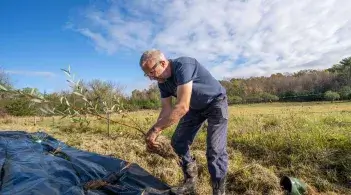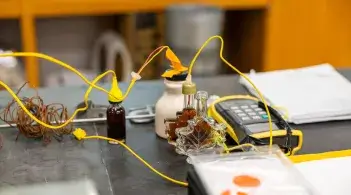Grant Program Details
Frequently asked questions
1. Does the Letter of Intent route through UVMClick or another system?
The Letter of Intent routes through InfoReady. At the final proposal stage, budgets will be submitted and approved through UVMClick.
Note: For the budget justification, many applicants use UVMClick as a best practice during the letter of intent phase, but it is not required until the final proposal.
2. The Leahy Institute for Rural Partnerships is funded by federal funds through a grant from USDA/NIFA. Will these funds continue to be available amid federal funding changes?
The Leahy Institute for Rural Partnerships receives funding from the USDA/National Institute of Food and Agriculture (NIFA) to support our work. The availability of federal funding is subject to the discretion of Congress and USDA. Should either Congress or USDA propose changes to our funding, we would immediately notify our partners.
3. Who is eligible to apply for a grant?
This grant is open to all organizations that work within the State of Vermont and is open to University of Vermont faculty and staff.
We will accept applications from nonprofit and for-profit organizations, start-ups, local governments, and UVM-affiliated applicants.
4. I am a faculty/staff member at the University of Vermont. Am I eligible to apply?
You are welcome to apply to this program as a UVM faculty or staff member.
Please see Question #8 for important details on working with your department/unit to apply for a Leahy grant.
5. How do I know how much funding to request for the project?
The best practice for requesting funding is to request the amount that will promote the greatest impact while also considering the organization’s current capacity.
Project sustainability past the Partnership Grant lifespan is a major component of proposal evaluation, so it is important to consider what the immediate needs are but not promise too much that the project’s sustainability would come into question.
6. What project costs are eligible, and which are ineligible?
Costs essential to completion of the project scope of work are eligible, but must remain compliant within USDA/NIFA federal guidelines.
Examples of eligible costs include:
- Salaries/Time for project personnel
- Consultant & Contract Expenses
- Publications
- Domestic Travel
- Memberships to technical/professional organizations
- Stipends for students and trainees
- Equipment <$5,000 (e.g. technology)
Examples of ineligible costs include:
- Fixed equipment
- Building renovations
- Entertainment costs
- For more information on food-related costs, see Question 7.
- Lobbying/Membership to lobbying organizations
- Cash incentives
- Promotional items (Items to give away: Conference giveaways; T-shirts; bags, pens, pencils, etc.)
Indirect costs of up to 1% are allowed on modified total direct costs.
For questions on eligible costs, please contact Daria Jarani, Program Manager, at djarani@uvm.edu.
7. The project I plan to propose includes budget line items for food/refreshments. How can I determine which expenses are allowed under NIFA guidelines?
Food and meals expenses fall under two categories: sponsored provisions or business meals. The Leahy Institute will support eligible sponsored provisions. Business meals, as a rule, cannot be supported through the Leahy Institute or through any sponsored project, as they are considered entertainment
(Note: Meals consumed while in official travel status do not fall in this category. They are considered per diem expenses and should be reimbursed in accordance with the organization’s established travel policies subject to statutory limitations.)
Sponsored Provisions can be defined as food/meals served during a UVM-hosted workshop, event, training, seminar, etc. with a published agenda that shows the timeframe of the event is of a long-enough duration that food/a meal needs to be served to the attendees. A sponsored provision is for food served at an event hosted by UVM and does not include meals provided at external restaurants.
Example of Allowable Sponsored Provision: An event with an agenda from 8 AM to 4:30 PM, where all attendees are expected to stay at the event for the duration. It is reasonable in this case that UVM would serve lunch and light snacks to encourage the attendees to attend the all-day event and still be provided with food and nourishment.
8. I am a UVM Faculty/Staff Member. How can I communicate to my department my intent to apply for a Leahy Institute grant?
For our applicants who are UVM Faculty or Staff, please work with your Department Chair, SPA 2.0 representative, and/or Business Manager when considering applying for a Leahy Institute grant. Projects that will be administered by the UVM Partner will need approval through UVMClick, as with other federal grants.
9. What is the Leahy Institute Advisory Board?
The Leahy Institute Advisory Board was created to advise the Institute on its work and to help promote, review, and approve partnership opportunities that will provide nationally scalable economic development solutions. Board membership is comprised of community and business leaders, and key UVM leaders.
Full list of board members and their affiliations
10. How will UVM students be involved in approved partnerships?
The Leahy Institute for Rural Partnerships prioritizes the cultivation of reciprocal relationships among UVM students and rural communities, in service to Vermont’s economy. Community partners can engage with UVM students through (1) Participation in service-learning courses led by UVM faculty, (2) creating internship positions, (3) micro-internships, (4) semester and summer internships, (5) year-long co-ops, and (6) participation in summer intern cohort workshops.
For more information on Student Engagement at UVM, please contact Kristen Andrews, Internship Coordinator, at kandrews@uvm.edu.
11. How can my organization prepare materials for student engagement to include in our application?
Student engagement, including but not limited to internships and service learning, are an important piece of a successful application. If your organization is preparing to host an intern, or would like to get the process started, please include one of the following Student Engagement Attachments when preparing your final proposal:
- Internship job description with a named supervisor
- Service-Learning scope of work for students and an identified faculty instructor
- Micro-internship job description
- Research scope of work with faculty sponsor, and evidence of IRB initiation
12. What is service-learning, and how is it offered at UVM?
Each year, between 80 to 100 community-engaged service-learning courses are offered at UVM. Students apply their coursework in real-world settings, and in ways that address priorities identified by community partners. Faculty provide a structure for accountability to the project or service that benefits the community partners and helps students learn from their experience.
13. What are the reporting requirements for this grant program?
Funding recipients will be asked to complete two reports over the year-long period of performance: a 6-month report and a final closeout report. It is the Leahy Institute’s intent to keep reporting streamlined and we will attempt to reduce the burden on the awardee wherever we are able.
14. How does the Leahy Institute work with funded projects during the performance period?
In addition to reporting, the Leahy Institute will invite partners participation in our events, including the annual RISE Summit, our “Pitch” event with funders and other community leaders, and opportunities to network in support of the project.
You’ll also be assigned a project lead who will act as your liaison over the course of the period of performance.
15. If I am denied funding for this cycle, what are my next steps?
If your partnership does not receive funding, there will be future opportunities to request support. The Leahy Institute for Rural Partnerships hosts annual grant cycles every Fall. We will be publicizing future grant cycles in our Office of Engagement newsletter.
Please sign up here to receive updates from the Leahy Institute for Rural Partnerships directly to your email inbox.



